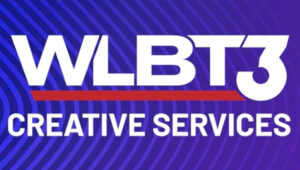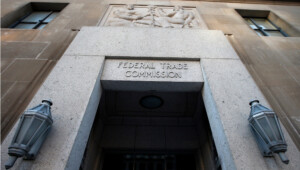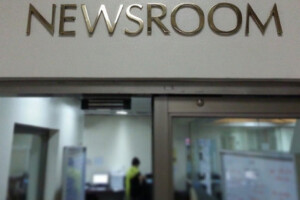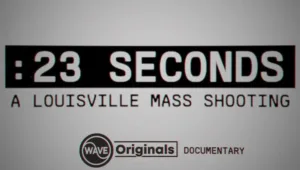Sinclair’s Smith Sees Next-Gen TV Progress
 CEO David Smith: “By July, maybe August, we should know essentially what the future platform will look like, what business platforms we can roll off that will look like. It’s the first time in 20 years I’ve seen the industry line up to control its own destiny.”
CEO David Smith: “By July, maybe August, we should know essentially what the future platform will look like, what business platforms we can roll off that will look like. It’s the first time in 20 years I’ve seen the industry line up to control its own destiny.”
NAB Exhibition Holds Keys To TV’s Future

Verance-Linear Acoustic | Booth N5738 Verance Corp., a provider of watermarking solutions, today announced it has partnered with Linear Acoustic to integrate VP1, an open solution for first-screen ACR (automatic […]
Triveni Digital | Booths SU8802 & N5637 | Website: www.TriveniDigital.com Triveni Digital will demonstrate a new targeted advertising application for the ATSC 3.0 next-generation broadcast television standard at the 2015 […]
An ATSC 3.0 working group has recommended Verance Corp.’s VP1 technology be incorporated into the final standard to permit personalized audio and video, on-screen interactivity, dynamic advertising and viewer measurement, Verance said today.
Smith’s Agenda: Auction, ATSC 3.0, Retrans
 As president of the NAB, Gordon Smith can’t solve all the ails facing TV broadcasters, but he seems determined to do what he can to provide adequate repacking reimbursement for broadcasters who don’t participate in the incentive auction, advance the next-gen broadcast standard and defend broadcasters’ retrans rights on two fronts (in Congress and at the FCC).
As president of the NAB, Gordon Smith can’t solve all the ails facing TV broadcasters, but he seems determined to do what he can to provide adequate repacking reimbursement for broadcasters who don’t participate in the incentive auction, advance the next-gen broadcast standard and defend broadcasters’ retrans rights on two fronts (in Congress and at the FCC).
Starting in May, LG and GatesAir plan to test their Futurecast broadcast system, one of several being considered by the ATSC as the ATSC 3.0 standard, using a moth-balled transmitter and antenna belonging to Tribune’s WJW and operating on ch. 31. Eventually, the facility will be turned over to the NAB for testing other next-gen technology for ATSC.
Broadcast-Centric Standard Gelling At ATSC
 Proponents for a new broadcast TV transmission standard are putting aside their differences and forming coalitions. ONE Media — a joint venture of Sinclair Broadcast Group and Coherent Logix — and China’s National Engineering Research Center of Digital Television, have agreed to pool technology over the key signaling component of the transmission standard or “physical layer.” According to a source close to the committee, ATSC has accepted the ONE Media/NERC technology, which is currently under final ATSC review.
Proponents for a new broadcast TV transmission standard are putting aside their differences and forming coalitions. ONE Media — a joint venture of Sinclair Broadcast Group and Coherent Logix — and China’s National Engineering Research Center of Digital Television, have agreed to pool technology over the key signaling component of the transmission standard or “physical layer.” According to a source close to the committee, ATSC has accepted the ONE Media/NERC technology, which is currently under final ATSC review.
Next-Gen Broadcasting: What’s In It For You?

Plenty, says a top executive of One Media, one of the companies vying to become the national standard for next-generation digital TV. Broadcasters will finally be able to serve the enormous and growing population that watches programming on portable and mobile devices, bolstering its ad-supported business model. It will also open up new opportunities in targeted advertising and data distribution. Moving to the next-gen standard in conjunction with the repack of the TV band following the incentive auction must become part of our national policy.
ATSC Launches Tech Review Of Next-Gen TV Audio
BEC To Offer Insight On ATSC 3.0 Developments
Billions Of $ At Stake In ATSC Next-Gen Effort
 Companies are proposing a next-generation broadcast TV tech standard to reach a number of goals. But one result that’s not been in the spotlight is the mega-bucks that will flow to them in the form of royalties from whatever patented technology they can squeeze into the new standard.
Companies are proposing a next-generation broadcast TV tech standard to reach a number of goals. But one result that’s not been in the spotlight is the mega-bucks that will flow to them in the form of royalties from whatever patented technology they can squeeze into the new standard.
NAB Board: Go For Auction; Split On ATSC 3.0

 Three systems are vying for adoption as the audio component of the upcoming ATSC 3.0 next-gen broadcast standard. The systems — from Dolby Laboratories, DTS and the triumvirate of Technicolor, Fraunhofer and Qualcomm — are designed to offer broadcasters the tools to continue delivering what viewers are accustomed to receiving today while positioning the industry to offer a much richer audio experience in the not-too-distant future.
Three systems are vying for adoption as the audio component of the upcoming ATSC 3.0 next-gen broadcast standard. The systems — from Dolby Laboratories, DTS and the triumvirate of Technicolor, Fraunhofer and Qualcomm — are designed to offer broadcasters the tools to continue delivering what viewers are accustomed to receiving today while positioning the industry to offer a much richer audio experience in the not-too-distant future.
Wireless Carriers: Next-Gen TV’s Big Obstacle

Path To Next-Gen Broadcasting Not Easy
 What will it take to implement ATSC 3.0? Getting the industry, government, consumer electronics makers and the public all on the same page.
What will it take to implement ATSC 3.0? Getting the industry, government, consumer electronics makers and the public all on the same page.
One scenario that would allow broadcasters to reduce their costs as they transition to ATSC 3.0 is to synchronize the switch with the FCC’s upcoming incentive auction. The auction will […]
Sinclair’s Smith Beats The Drum For ATSC 3.0
 Sinclair CEO David Smith says that without a new technical standard that lets broadcasters beam their signals to all devices, they will lose to cable and telcos and become “essentially a three-legged dog in a four-legged dog, fast-track world.”
Sinclair CEO David Smith says that without a new technical standard that lets broadcasters beam their signals to all devices, they will lose to cable and telcos and become “essentially a three-legged dog in a four-legged dog, fast-track world.”
Broadcast TV in the U.S. will undergo two big changes in the next few years, and a clash in the timeline for those shifts promises big problems for pubic TV stations. In an ideal world, the transformation would take place in a single step. When stations are repacked to new channels as part of the FCC’s spectrum auction, they’d also switch from today’s ATSC 1.0 system to the new ATSC 3.0 system. In reality, the next steps are likely to be much more complicated, and potentially much more expensive as well.
The future of over-the-air broadcasting via ATSC 3.0 was a hot topic at CCW in New York last week, especially during a couple of the panel discussions in the conference area. The question now is whether the new standard, which promises much, can get into the marketplace sooner rather than later so that broadcasters can catch up with new distribution methods that potentially could render over-the-air broadcasting redundant.
Let Local TV Chart Its Own Tech Future
 Jerald Fritz of ATSC 3.0 system proponent ONE Media: “Broadcast television — like every other information medium — needs the freedom to evolve. We need to lose the economic, regulatory and engineering shackles that bind us to the silos of a single, fixed reception device anchored to the living room wall. So how do we do that? We’ve done that by reimagining our business. And that starts with a clear, clean, efficient way to get our signals to viewers wherever they are, using whatever equipment they have. Local broadcasters have a better idea.”
Jerald Fritz of ATSC 3.0 system proponent ONE Media: “Broadcast television — like every other information medium — needs the freedom to evolve. We need to lose the economic, regulatory and engineering shackles that bind us to the silos of a single, fixed reception device anchored to the living room wall. So how do we do that? We’ve done that by reimagining our business. And that starts with a clear, clean, efficient way to get our signals to viewers wherever they are, using whatever equipment they have. Local broadcasters have a better idea.”
ATSC 3.0: Lead, Follow Or Get Out Of The Way

Broadcast Nets Not United Behind ATSC 3.0
The push to develop a new broadcast TV transmission standard that would also serve mobile devices has not yet received the full support of ABC and CBS. Both say it’s too early to commit without knowing all the financial and technical ramifications. Other broadcasters, including Fox and NBC, also seem to be hedging their bets.
LG, GatesAir Test Next-Gen TV Over WKOW
Early this morning, GatesAir, LG and its subsidiary Zenith with the help of Quincy Group’s WKOW Madison, Wis., conducted an on-air test of Futurecast, a contender for the ATSC 3.0 digital TV transmission standard in the United States.
WKOW To Demo LG Next-Gen TV System
LG and GatesAir will conduct a test of the Futurecast digital TV system on the Quincy Broadcasting-owned ABC afiliate in Madison, Wis., on Oct. 22. The system is one of the proponents in the ATSC 3.0 standards-setting contest.
The companies say the successful test shows that “broadcasters will be able to deliver the highest quality content, inclusive of 4K UltraHD live broadcast in a simultaneous transmission to consumers both at home and on-the-go.”
 Triveni Digital’s Rich Chernock, who’s leading the technical group responsible for developing the ATSC 3.0 standard, says progress has been impressive. On a technical level, perhaps the most significant is that the standard is being developed in such a way that it will be able to flex and absorb new technologies that inevitably will come along. And on political and economic levels, ATSC 3.0, he says, has the possibility of providing a framework for a global television standard that could work for the next 30-40 years.
Triveni Digital’s Rich Chernock, who’s leading the technical group responsible for developing the ATSC 3.0 standard, says progress has been impressive. On a technical level, perhaps the most significant is that the standard is being developed in such a way that it will be able to flex and absorb new technologies that inevitably will come along. And on political and economic levels, ATSC 3.0, he says, has the possibility of providing a framework for a global television standard that could work for the next 30-40 years.
Sinclair’s Big Plans For Cable News, ATSC 3.0
Now that its Allbritton purchase is done, Sinclair CEO David Smith says he’s eager to start taking on Fox News Channel and MSNBC with NewsChannel 8. And on another initiative near and dear to Sinclair — ATSC 3.0 — Smith said Sinclair is working on a plan to transition to the new standard that costs virtually nothing and is transparent to the public.
Former NAB CTO Kevin Gage has been named EVP of ONE Media, Sinclair Broadcast Group’s joint venture that is developing technology it hopes will become the ATSC 3.0 next-gen TV transmission standard.
Verizon LTE Multicast Mimics Broadcast Model
 Verizon’s new offering in development, LTE Multicast, will use broadcasting’s one-to-many model to deliver video to mobile devices. Although the service is still a long way off, broadcasters see it as a threat and are responding in part by pushing forward with the development of a next-generation broadcasting system through the Advanced Television Systems Committee.
Verizon’s new offering in development, LTE Multicast, will use broadcasting’s one-to-many model to deliver video to mobile devices. Although the service is still a long way off, broadcasters see it as a threat and are responding in part by pushing forward with the development of a next-generation broadcasting system through the Advanced Television Systems Committee.
Repeaters Integral To Next-Gen Mobile Future
Single frequency networks may be the technology that makes it possible for stations compete with wireless in reaching viewers on their mobile devices. Proponents say these booster sites can provide strong signals throughout a station’s coverage area. However it comes at a price: capital costs to implement such booster networks could hit $2 million per market.
TV’s Future Hinges On DC Tech, Reg Moves
































